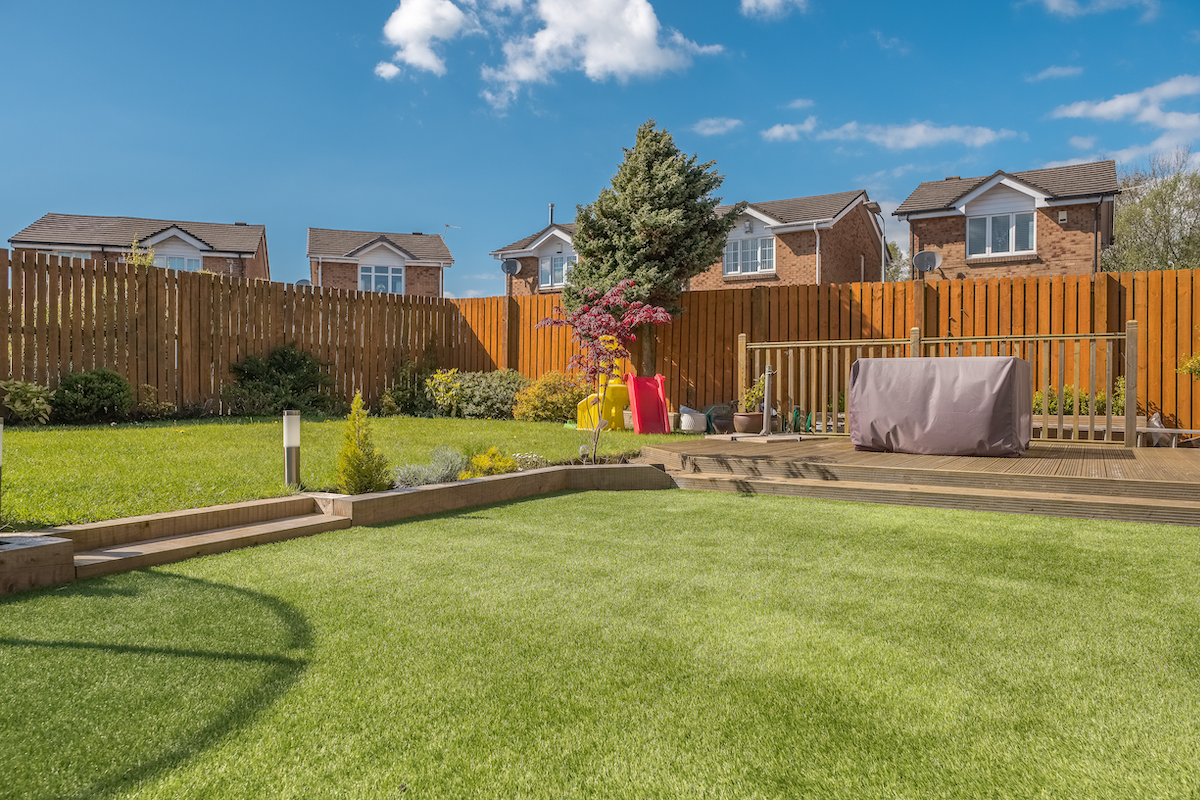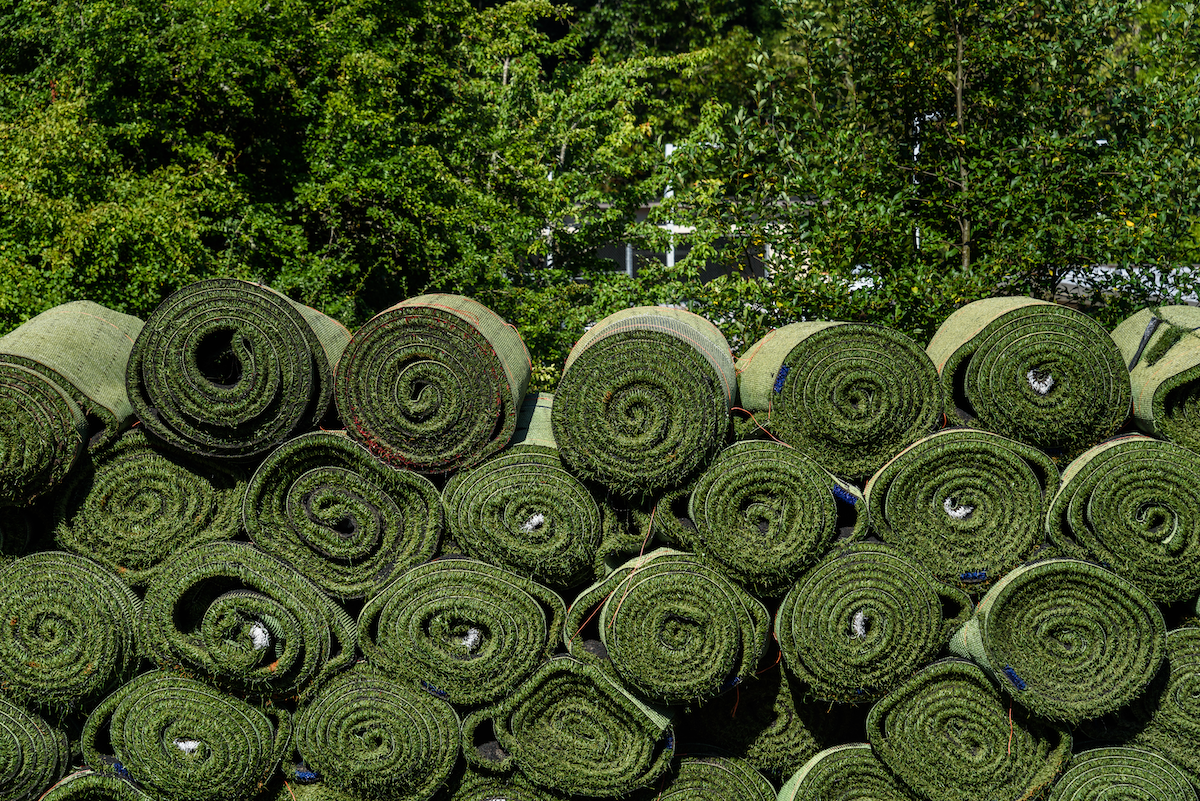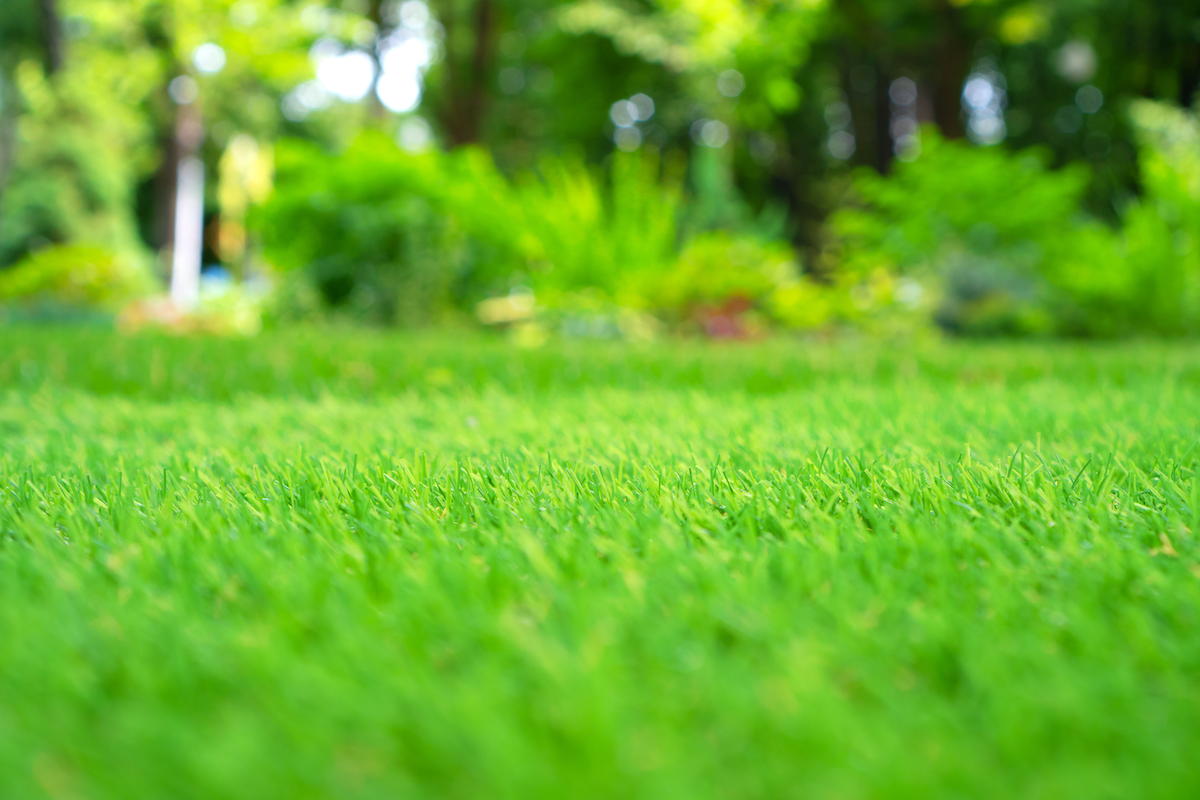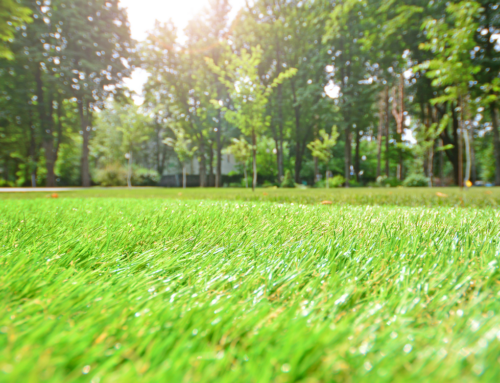Last Updated on April 17, 2023 by ReTurf
Artificial turf has come a long way since the first astroturf was introduced—and synthetic grass is an increasingly popular option for those seeking low maintenance, aesthetically-pleasing landscaping. One of the most common questions that homeowners and business owners ask about artificial turf is “will it stay green?”
It’s a great question—and an important consideration for anyone interested in installing synthetic grass. Especially those who live in parts of the country with high sun exposure or other harsh climate conditions.
Will My Artificial Turf Installation Stay Green?

The old “fake grass” of years past had a lot of shortcomings; a huge one was its reputation for losing its color over time. After prolonged exposure to sun, the bright green nylon fiber began to fade, and within a few years, those old fake grasses really looked fake.
However, with advancements in technology, rolls of fake grass (or rather, rolls of artificial turf) have improved significantly in modern times.
Unlike those early synthetic grasses, which actually had color directly applied to the outside of the blades like paint, today’s artificial turf uses color pigments that are embedded in the material of the grass blades.
In addition to being available in a much wider variety of more natural-looking green hues, high-quality turf of today won’t just start fading away like the “paint” on old-fashioned fake grasses.

UV-Resistant Fake Grass
Additionally, higher grades of artificial grass have UV stabilizers added that help prevent the synthetic fibers from fading. UV stabilizers are added to the material before the synthetic blades are formed. This incorporates it directly into the material of the blades so it will not wear away or be washed off.
While it’s inevitable that a small percentage of fading will occur over time with anything placed outdoors, when UV resistance is added to professional grade turf, it’s normally a very small percentage—even when measured over a decade or longer. With proper care and maintenance, high quality “fake grass” can retain its natural-looking green coloring for years, and years to come.
Other Benefits of Buying Rolls of Fake Grass
In addition to the much longer-lasting, more natural color of modern artificial turf compared to the original 1960s astro turf and the old fake grass of the 70s, 80s, and 90s, it has many other advantages as well.
One of the main benefits is that it requires extremely little maintenance. Unlike natural grass, which needs to be mowed, watered, fertilized, and weeded at a minimum, artificial turf requires no mowing or watering—only some very occasional “brushing” and rinsing with the garden hose to help keep the blades looking their best.

Artificial turf also drains easily—typically more easily than “real” grass, in a professional fake grass installation—which means that it won’t become waterlogged or muddy, making it an ideal option for areas with heavy rainfall or poor drainage.
Artificial grass is “naturally” also a great choice for those who suffer from allergies or asthma, as it doesn’t produce pollen or other allergens like real grass.
The Bottom Line
Artificial turf is a great option for those seeking a beautiful, low-maintenance landscaping solution. With advancements in technology and the use of UV stabilizers, “fake” grass now retains its verdant green coloring all year long, making it a great investment for homeowners, businesses, municipalities, and other organizations.
So, no worries—even if you live in an area with high sun exposure, heavy rainfall, or other harsh climate conditions, professional-grade fake grass can still be a durable and long-lasting solution that will provide beautiful, vibrant, low-maintenance landscaping for years to come.



